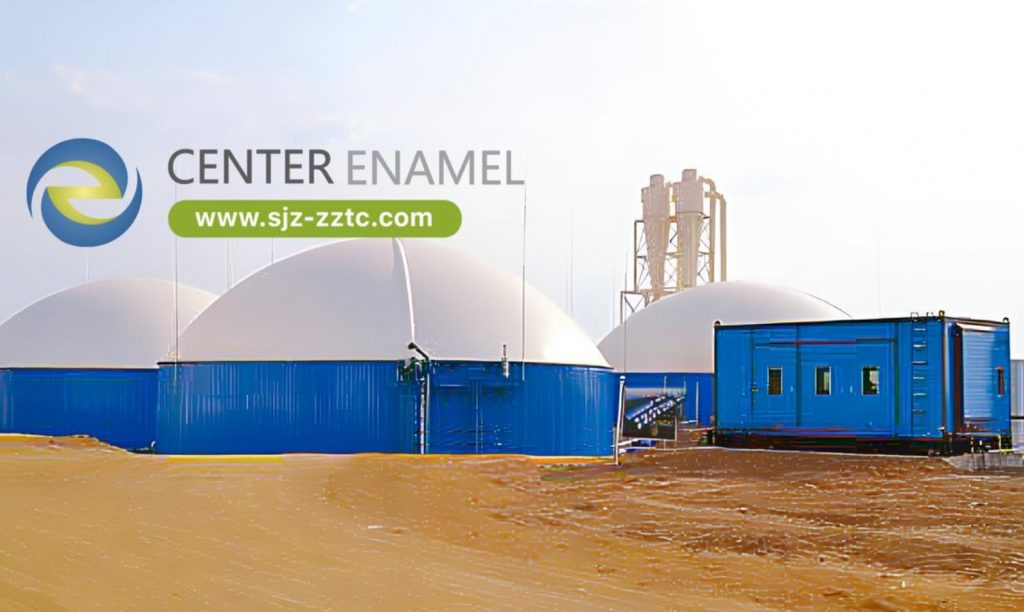High-Rate Anaerobic Reactor for Food Industry Wastewater

The food processing industry generates substantial volumes of wastewater rich in organic matter, posing significant treatment challenges and environmental concerns. Effective wastewater management is not only a regulatory imperative but also an opportunity to recover valuable resources, such as renewable energy in the form of biogas. High-rate anaerobic reactors have emerged as a transformative technology, offering a robust, efficient, and economically viable solution for treating food industry wastewater while converting waste into energy.
Addressing the Challenges of Food Industry Wastewater
Food processing operations typically produce wastewater with elevated concentrations of Chemical Oxygen Demand (COD), Biochemical Oxygen Demand (BOD), fats, oils, and suspended solids. Conventional aerobic treatment processes can be energy-intensive and often struggle to manage the high organic load effectively. In contrast, anaerobic treatment harnesses microbial processes to degrade complex organic compounds in the absence of oxygen, simultaneously reducing pollutant levels and producing biogas. High-rate anaerobic reactors are specifically designed to accelerate these biological processes, handling high organic loading rates while maintaining a compact footprint.
The Principles of High-Rate Anaerobic Reactors
High-rate anaerobic reactors are engineered to maximize the efficiency of biological conversion by retaining a high concentration of active microorganisms within the reactor. This is achieved through advanced reactor designs that promote biomass retention, rapid substrate uptake, and effective mixing. Key reactor configurations include Upflow Anaerobic Sludge Blanket (UASB) reactors and Anaerobic Sequencing Batch Reactors (ASBR), among others. These systems create conditions that favor the growth of specialized microbial consortia capable of converting organic substrates into methane-rich biogas at an accelerated rate.
In a high-rate reactor, wastewater is introduced at the base, allowing it to flow upward through a dense microbial sludge bed. This design ensures prolonged contact between the wastewater and the microbial community, facilitating rapid degradation of organic compounds. Additionally, the reactor is equipped with mechanisms for sludge recirculation and enhanced mixing, which help maintain optimal conditions for microbial activity and prevent biomass washout, even under fluctuating loading conditions.
Key Features and Technical Advantages
1. High Organic Loading Capacity: High-rate anaerobic reactors are optimized to handle substantial organic loads, making them particularly well-suited for the concentrated wastewater streams typical of food processing plants. Their design enables rapid conversion of organic matter, leading to significant reductions in COD and BOD levels.
2. Enhanced Biomass Retention: The reactor design incorporates features that maximize microbial retention, ensuring that a high concentration of active biomass remains within the system. This not only increases the rate of organic matter degradation but also contributes to process stability and resilience against shock loads.
3. Compact Footprint and Scalability: Compared to conventional treatment systems, high-rate anaerobic reactors offer a more compact solution, reducing the spatial footprint required for wastewater treatment. Their modular design allows for straightforward scalability, enabling treatment capacity to be expanded in line with the evolving needs of a food processing facility.
4. Energy Recovery Through Biogas Production: One of the most compelling benefits of anaerobic treatment is the generation of biogas—a renewable energy source primarily composed of methane. The biogas produced can be harnessed on-site to power generators or other processes, thereby offsetting energy costs and reducing the overall carbon footprint of the facility.
5. Reduced Sludge Production: Anaerobic processes typically generate less sludge compared to aerobic systems. This reduction in sludge production translates into lower disposal costs and minimizes the environmental impact associated with sludge handling and treatment.
Operational Considerations and Process Integration
For optimal performance, high-rate anaerobic reactors require careful monitoring and control of several critical parameters, including temperature, pH, and organic loading rate. Temperature control is particularly vital, as anaerobic microbial activity is sensitive to thermal variations. Most high-rate systems are designed to operate within a mesophilic range, though thermophilic conditions can be employed under controlled circumstances to enhance reaction rates.
Integration of these reactors into existing wastewater treatment frameworks is often seamless. They can serve as a standalone treatment unit or be incorporated as a preliminary treatment stage before aerobic polishing. This hybrid approach leverages the strengths of both anaerobic and aerobic processes, ensuring compliance with stringent discharge regulations while maximizing energy recovery.
Advanced process control systems, including real-time monitoring sensors and automated feedback loops, are increasingly integrated into modern high-rate anaerobic reactors. These systems enable continuous optimization of operational parameters, ensuring that the reactor maintains peak performance even in the face of variable wastewater characteristics.
Environmental and Economic Implications
The environmental benefits of adopting high-rate anaerobic reactors extend beyond mere pollutant reduction. By converting organic waste into biogas, these systems contribute to a circular economy approach, reducing reliance on fossil fuels and mitigating greenhouse gas emissions. The secure containment and efficient processing of wastewater also minimize the risk of accidental discharges, thereby protecting local water bodies and ecosystems.
Economically, high-rate anaerobic reactors offer significant cost advantages. The lower energy requirements, reduced sludge production, and potential for energy recovery result in decreased operational expenses over the lifecycle of the treatment system. Moreover, the compact design and scalability of these reactors make them an attractive option for both new installations and retrofits in existing facilities.
A Pathway to Sustainable Wastewater Management
In an era where environmental stewardship and resource efficiency are paramount, high-rate anaerobic reactors represent a paradigm shift in the treatment of food industry wastewater. Their ability to rapidly and effectively degrade organic matter while generating renewable energy positions them as a key technology for sustainable industrial operations.
Center Enamel is at the forefront of this technological innovation, offering advanced solutions designed to meet the rigorous demands of modern food processing facilities. With a commitment to precision engineering, operational excellence, and environmental sustainability, we deliver high-rate anaerobic reactor systems that not only comply with regulatory standards but also drive significant economic and environmental benefits.
Contact Center Enamel today to explore how our advanced high-rate anaerobic reactor solutions can be customized to meet the specific needs of your facility, paving the way for a more sustainable and efficient future in industrial wastewater treatment.
